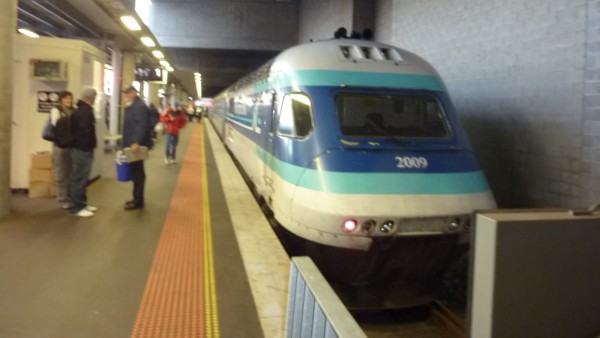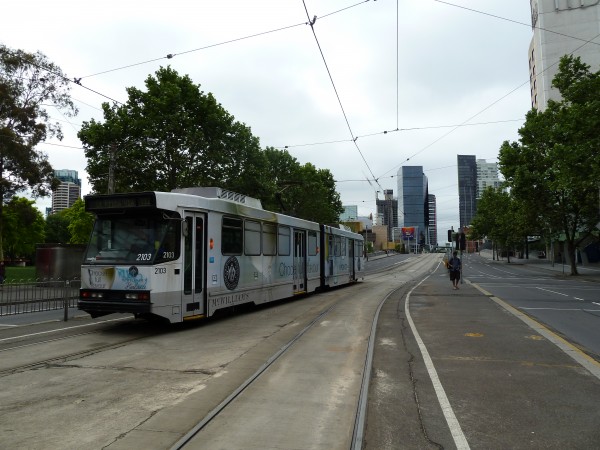
Victor P Taffa
Every Normal Country around the world has a High-Speed Train that moves people, Politicians support and Government’s build. Japan has had the ‘Bullet’ Train that travels at speeds of 300Km/h since the 1960’s. Japan only days before their horrific earthquake and tsunami announced designs and plans for a new High-Speed Train.
High-Speed Rail Business Case:
The Business Case for High-Speed Rail in Australia is quite easy to define and very lucrative for potential Public or Private Operators. Current ticket sales and associated Government revenue from such sales for Airline and Bus Tickets would be a good guide to the likely percentage of revenue earned from High-Speed Rail Travel.
This is not to say that by providing High-Speed Rail that everyone will switch from the Airlines or Bus Travel. Put simply in the world’s largest island continent people want to have the option of which mode of travel that they can go by. People in many cases of all ages simply want someone else to do the driving for them and not have to go for hundreds of kilometres and put their lives at risk by driving on inadequate roads.
The Oil, Airline, Car, Bus and Truck Industries have had the commercial advantage over Railways and Tramways for several decades. Politicians of all sides at all levels have ignored Railway and Tramway Expansion especially in New South Wales. These same Industries have FAILED to provide world-class Motorways and as such Australia is left with a series of cart tracks that we refer to as Highways. The National Roads and Motorists Association (NRMA) have failed to ensure that the Pacific and Hume Highways have completely dual carriageways.
New High-Speed Trains for Australia can be an export earner for Japan in its hour of need in the same way that increased Coal Exports to Japan will be beneficial to Japan as the case for the Uranium Industry has been set back by 50 years by Japan’s Earthquake and Tsunami. In light of the problems with the Uranium Industry should a Carbon Tax Regime be implemented by the Gillard Government Coal Export Markets will be at a disadvantage and Australia will suffer.
O’Farrell/Stoner Government:
The New South Wales Election on 26 March 2011 is most likely to result in an O’Farrell/ Stoner Liberal/National Government being elected to Office. The M4 and M5 Motorways in Sydney have been mentioned as roads to upgrade as part of ‘Sydney’s Missing Link’. The term ‘Sydney’s Missing Link’ is an expression that is trotted out at the drop of a hat as an excuse not to build Railway Lines in Sydney. This expression had some currency when there were no M2, M4, M5 or M7 Roads however the Railways continue to suffer at the expense of the Road Lobby. Sydney has a complete Road Network unlike the inadequate Rail Network.
The NRMA seems to think that the M4 and M5 are more important to extend or widen than the Pacific, Princes or Hume Highways. Some people seem to think that there are no votes in fixing the Pacific Highway. This is complete nonsense as people from across New South Wales use the Pacific Highway.
The priority for the O’Farrell/Stoner Government should be to finish the Pacific Highway and completely quadruple the East Hills Railway Line. By Expanding and Improving Railway Lines across Sydney will take more pressure off roads than an ill-conceived widening of poorly planned Motorways. There are also more votes in Railway Lines than Roads.

Sydney XPT Arrives Platform 1 At Southern Cross Station Melbourne
High-Speed Rail:
Melbourne-Canberra-Sydney-Brisbane:
High-Speed Rail between Melbourne, Canberra, Sydney and Brisbane is not an option or luxury but a necessity. The Sydney-Melbourne Air Route is one of the busiest in the world. The Route for High-Speed Rail almost picks itself and needs for studies at a cost of $20 Million are simply an excuse to do nothing.
High-Speed Rail Stations would not be the same as Stops for existing XPT Services. High-Speed Rail operates at 300Km/h and as such only stops at Major Regional Towns and Cities. Existing XPT Services would remain as not all commuters want to catch a High-Speed Train. XPT Services while not a suburban service would have a different role to play in the Tourism Industry.
High-Speed Rail requires existing corridors to be Realigned, Duplicated and Electrified. High-Speed Stations would also require new Platforms. High-Speed Rail will operate on Standard Gauge Track. The Operator of the service would be chosen through a Public Tender from either the Public or Private sector.
High-Speed Rail between Melbourne, Canberra, Sydney and Brisbane includes many new Line alignments as contained in www.isput.com.au
Stations and Lines include the following:
- Flinders Street Platform 11( Currently unused)
- Southern Cross Station
- Seymour
- Benalla
- Wodonga
- Albury
- Southern Line Extension
- Canberra
- Queanbeyan
- Goulburn
- Moss Vale
- New Alignment between Moss Vale and Wollongong
- Wollongong
- Princes Line
- Bradfield Line
- New Alignment from Sydney Central Platforms 26 & 27 onto ‘Flying Junction’ Tracks
- Western Line between Redfern and Strathfield
- Strathfield
- Hornsby
- Northern Line including widening of John Whitton Bridge across Parramatta River
- Quadruple Northern Line between Strathfield and Hornsby
- Cessnock Line (Only High-Speed Stops being Cessnock and Maitland)
- Northern Line To Brisbane
- Taree
- Wauchope
- Grafton
- Casino
- Roma Street
- Duplication and Electrification between Queensland Border and Roma Street Station
Roma Street Station would have two tracks operating as opposed to the current single track alignment. This may require the use of a second Platform at Roma Street for High-Speed Rail.
The Princes, Bradfield and Cessnock Lines would have other Stations built to accommodate normal RailCorp Services although High-Speed Rail would not stop at all stations except the Bradfield Line.
The Cessnock Line will necessitate Electrification between Newcastle and Maitland.
The Bradfield Line is a second City Circle Line for Sydney that utilises Platforms 26 & 27 at Central, Platforms 2 & 3 at St. James and existing tunnelling under Parliament House. The current City Circle Line is operating at capacity and The Bradfield Line expands the RailCorp Network long into the future. Wynyard Platforms 1 & 2 should become Railway Platforms and not the Carpark that has been there since 1959.
The Stops chosen, Alignments new Lines and new sections of Track are of better value for money to Victoria, The Australian Capital Territory, New South Wales and Queensland than some other ideas and this article has been written without Multi-Million Dollar Consultants and Spin Doctors’.

Flinders Street Station Melbourne
Melbourne-Geelong-Ballarat-Bendigo-Mildura-Broken Hill-Trans Continental Line:
The Baillieu Victoria Government announced support for High-Speed Rail between Melbourne-Canberra-Sydney and Brisbane.
The Baillieu Victoria Government also announced support for a Railway Line between Geelong-Ballarat and Bendigo. This Railway Line is needed and would be the spine for High-Speed Rail between Melbourne and the Transcontinental Line.

Victoria Premier Ted Baillieu
Melbourne-Perth via Mildura, Broken Hill and Transcontinental Line:
The Indian-Pacific Train takes 3 days to run from Sydney-Perth. The Transcontinental Line was opened in 1917 by Prime Minister Billy Hughes and has one of the longest stretches of Railway Line in the world. The Transcontinental Line is a Single Track Line that traverses the Nullabor Plains. The Transcontinental Line requires complete duplication and also dual sidings for the Indian-Pacific. The Transcontinental Line would also need to be electrified with a High-Speed Train.

Victoria Deputy Premier Peter Ryan
Melbourne-Adelaide:
There is a good Business Case that would support High-Speed Rail between Melbourne and Adelaide and also Sydney-Adelaide. All Interstate Trains currently terminate at Keswick and not Adelaide. Keswick is like expecting all Rail Commuters to get out at Redfern and walk to Sydney or get out at North Melbourne and walk to Melbourne. Interstate Trains terminating at Keswick was a victory for the anti-rail lobby. Line duplication and electrification would be required.

Victoria Minister for Public Transport Terry Mulder
Melbourne-Darwin:
There is a good Business Case that would support High-Speed Rail between Melbourne and Darwin and also Sydney-Darwin. All Interstate Trains currently terminate at Palmerston and not Darwin. Palmerston is like expecting all Rail Commuters to get out at Redfern and walk to Sydney or get out at North Melbourne and walk to Melbourne. Interstate Trains terminating at Palmerston was a victory for the anti-rail lobby. Line duplication and electrification would be required.
Melbourne-Tasmania via Rail Ferry:
Tasmania has not seen a Passenger Train operate since 1978. The Tasmanian Railways were bought back from the Commonwealth in recent years and yet successive Tasmania Government’s have failed to reintroduce Passenger Trains to Tasmania.
The Business Case for Passenger Rail Services in Tasmania is a Broad Gauge Rail Ferry from Victoria’s Williamstown Line. New Duplicated and Electrified Broad Gauge Railway Lines can then be viable to Hobart and every Large City throughout Tasmania. The economic benefits to Tasmania would be enormous.
Railway Expansion:
Rail Networks in Sydney, Melbourne, Adelaide, Brisbane and Perth have had minor expansion however the overall network has not kept pace with population growth over several decades. Branch Line Configuration is a problem that besets all Rail Networks and is a throwback to 19th Century Transport Planning. Even Sydney’s North-West and South-West Rail Lines that are to be built MUST connect to other Lines from the commencement of operations. The Carlingford, Cronulla, Eastern Suburbs and Richmond Lines are Branch Lines and should have been connected to other Lines many decades ago.

Melbourne Tram Route 112 Bound For St.Kilda
Tramway Expansion:
Tramways in Melbourne and Adelaide have had some minor expansion however the overall network has not kept pace with population growth over several decades. Branch Line Configuration is a problem that besets all Tram Networks and is a throwback to 19th Century Transport Planning.
By continuing to deny Victor P Taffa a Public Role in Railway Administration is only a victory for the anti-rail lobby. Victor P Taffa has never committed an illegal act nor evaded paying tax. All that is needed now is for Victor P Taffa to go to work for the Baillieu Victoria Liberal/National Government and get to work to implement High-Speed Rail that everyone will use. After all Melbourne is a great place in which to live.

 RSS feed
RSS feed 